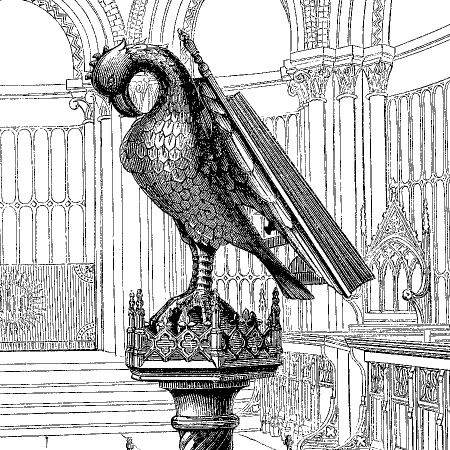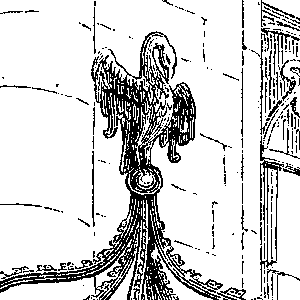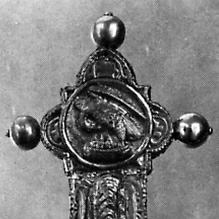E.g., on the lectern of Norwich Cathedral (Flemish, 1380), which would naturally have been the pelican with which Browne was most familiar;


in glass, as in a 15th C. (?) window of the church of St Roch, Pendomer, Somerset; in Bestiaries (see, for example, The Aberdeen Bestiary — note the somewhat unusual version of the pelican story given in the text); frequently in heraldry, usually in the crest, but occasionally as a charge, as with Bishop Fox of Bath, whose arms are represented carved on the church of St. Mary Rimpton (well, it was there. Now the page is restricted to intranet, which seems pointless. Needless to say, this bit of boosterism leaves a distinctly nasty impression of Somerset.) (Speaking heraldically, when by herself, the pelican is vulning; when with her young, she is said to be "in her piety").
On the Pulpit of Oxford Cathedral:


On the Ghent altarpiece, the tapestry behind the Triune God (or, as he is usually and somewhat implausibly referred to these days, "Crowned Christ") represents vulning pelicans and grapes, among other symbols of the Church.
On a silver-gilt crozier in the Museum of the Duomo at Rieti:

A pelican vulning, from the sketchbook of Villehard de Honnecourt (the shoulder to the pelican's left belongs to a mitered bishop(?); the circle presumably is the nest containing two sketchy pelicanets):

And finally, for comparison purposes, a content and non-vulning real pelican.
This page is maintained at the University of Chicago by James Eason, who welcomes comments, criticism, and suggestions.